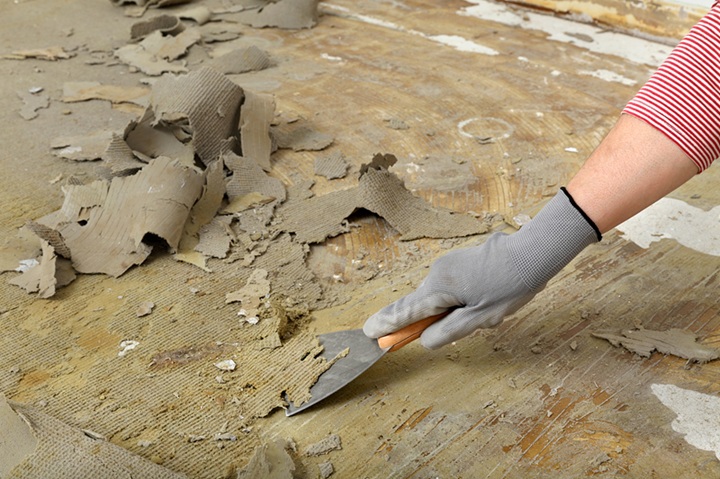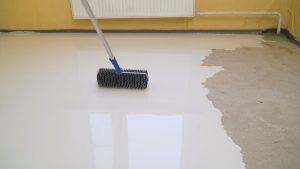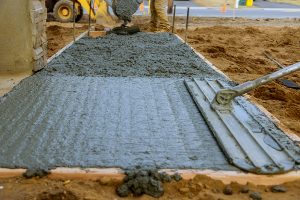When it comes to transforming concrete floors, the first step is often the messiest: tile glue removal. Whether you’re renovating a retail space, upgrading a warehouse floor, or modernizing a residential interior, one thing is certain—removing old adhesive from concrete is a crucial part of the process. And while it might sound straightforward, anyone who’s attempted it knows it’s anything but.
Tile adhesive, or thin-set, is designed to hold on tight. And it does. Long after the tiles are gone, the glue often remains—lumpy, stubborn, and in the way of any new finish you want to apply. That’s why proper tile glue removal is essential for a clean, smooth surface, especially if you’re planning on concrete floor polishing.
Let’s break down how professionals handle removing adhesive from concrete, why it matters, and how to do it right.
Why Tile Glue Removal Matters
If you’re thinking of skipping tile glue removal or cutting corners, don’t. Even a thin layer of leftover adhesive can lead to serious issues—ruining your new flooring, creating uneven surfaces, or preventing sealants from bonding properly.
For those planning to polish concrete floors, adhesive residue can clog grinding equipment, leave unsightly dark spots, or result in a patchy, dull finish. A properly cleaned and prepped surface ensures smooth grinding and polishing, better adhesion for new finishes, longer-lasting floor performance, and a clean, professional appearance.
Simply put, the better the prep, the better the final result.
What Makes Tile Glue So Tough?
Tile adhesive comes in different types, but they’re all designed to last decades. That means they’re incredibly resistant to water, wear, and even mechanical force. You’ll usually run into one of three types:
- Thinset Mortar: A cement-based adhesive that hardens like stone.
- Mastic Adhesive: A sticky, resin-based glue commonly used for wall tiles.
- Epoxy-Based Adhesive: Durable and chemical-resistant—used in industrial environments.
All of these require more than just elbow grease to remove effectively. Trying to chip them off with a scraper or hammer isn’t just inefficient—it can damage the concrete underneath.
The Right Way to Remove Tile Glue from Concrete
Professionals use a multi-step process and specialized tools to make tile glue removal efficient and safe for your floors.
Assessment First
Before diving in, the type of adhesive needs to be identified. This determines which removal method will work best. Some adhesives are water-soluble, others aren’t. And some, like epoxy, require heavier-duty equipment or solvents.
Mechanical Grinding
One of the most effective ways to remove glue is through mechanical grinding. Industrial grinders with diamond tooling are used to scrape and smooth the surface, taking the glue off layer by layer. This process not only removes the adhesive but also levels the surface in preparation for concrete floor polishing or sealing.
Chemical Solvents (If Needed)
In some cases, a commercial adhesive remover is applied to soften the glue before grinding. These are used with caution to avoid leaving chemical residue behind. After application, the floor is often rinsed or neutralized before continuing.
HEPA Vacuuming
Professional crews use HEPA-filtered vacuums during and after grinding to collect dust and glue particles. This keeps the job site cleaner and safer, especially for indoor spaces.
From Glue Removal to Polished Concrete
Once the glue is gone, you have a fresh surface to work with. That’s where concrete floor polishing comes in. A polished concrete floor not only looks sleek—it’s also:
- Durable and low-maintenance
- Resistant to stains and wear
- Cost-effective over time
- Aesthetically versatile (from matte to mirror-like shine)
This makes it a perfect solution for showrooms, offices, garages, or retail spaces.
But remember—polished concrete is only as good as the prep beneath it. Poor tile glue removal can ruin an otherwise beautiful floor.
DIY or Call a Pro?
If you’re wondering whether to handle this on your own, consider the scale of your project. Small spaces with thin mastic adhesive might be manageable for a skilled DIYer. But if you’re dealing with:
- Cement-based adhesives
- Large commercial spaces
- Plans to polish or seal the floor
- Health and safety considerations (dust control, chemicals)
Then hiring a professional team like Custom Concrete Prep & Polish is a smart move. We bring industrial-grade grinders, vacuums, and years of experience to tackle the job efficiently—with minimal downtime for your project.
Real-World Results: Why It Pays Off
Improperly removed adhesive can cause more headaches than it’s worth. From uneven coatings to failed finishes, rushing through this step can cost more in the long run.
And don’t just take our word for it: According to the Concrete Polishing Council, surface preparation is the #1 predictor of floor finish performance in polished concrete installations.
Cutting corners during glue removal can result in increased maintenance, reduced durability, and unsightly blemishes—none of which help your space look or perform its best.
A Clean Start Makes a Strong Finish
If your space still bears the scars of old tile flooring, don’t let leftover glue stand in the way of your renovation plans. Whether you’re updating a retail space, remodeling a garage, or planning an industrial floor upgrade, tile glue removal is the first step toward a clean, professional finish.
When done right, it sets the stage for long-lasting beauty—especially if you’re investing in concrete floor polishing.
Ready to Get Started?
Don’t let tile adhesive slow down your project or compromise your final finish. At Custom Concrete Prep & Polish, we make removing adhesive from concrete simple and effective—saving you time, stress, and future repairs.
Contact us to schedule a consultation or get a quote today. Let’s get your floors ready for whatever comes next.



